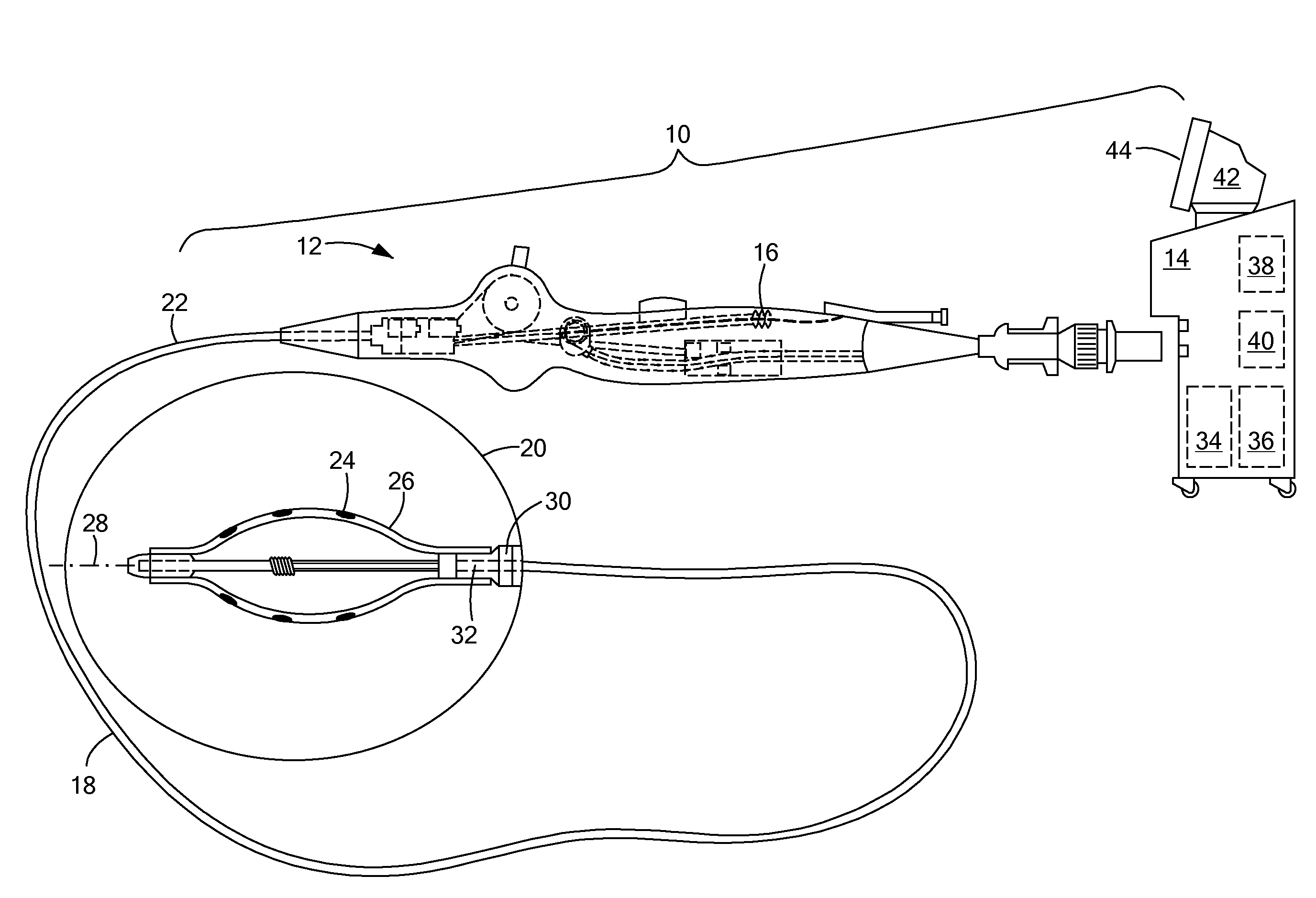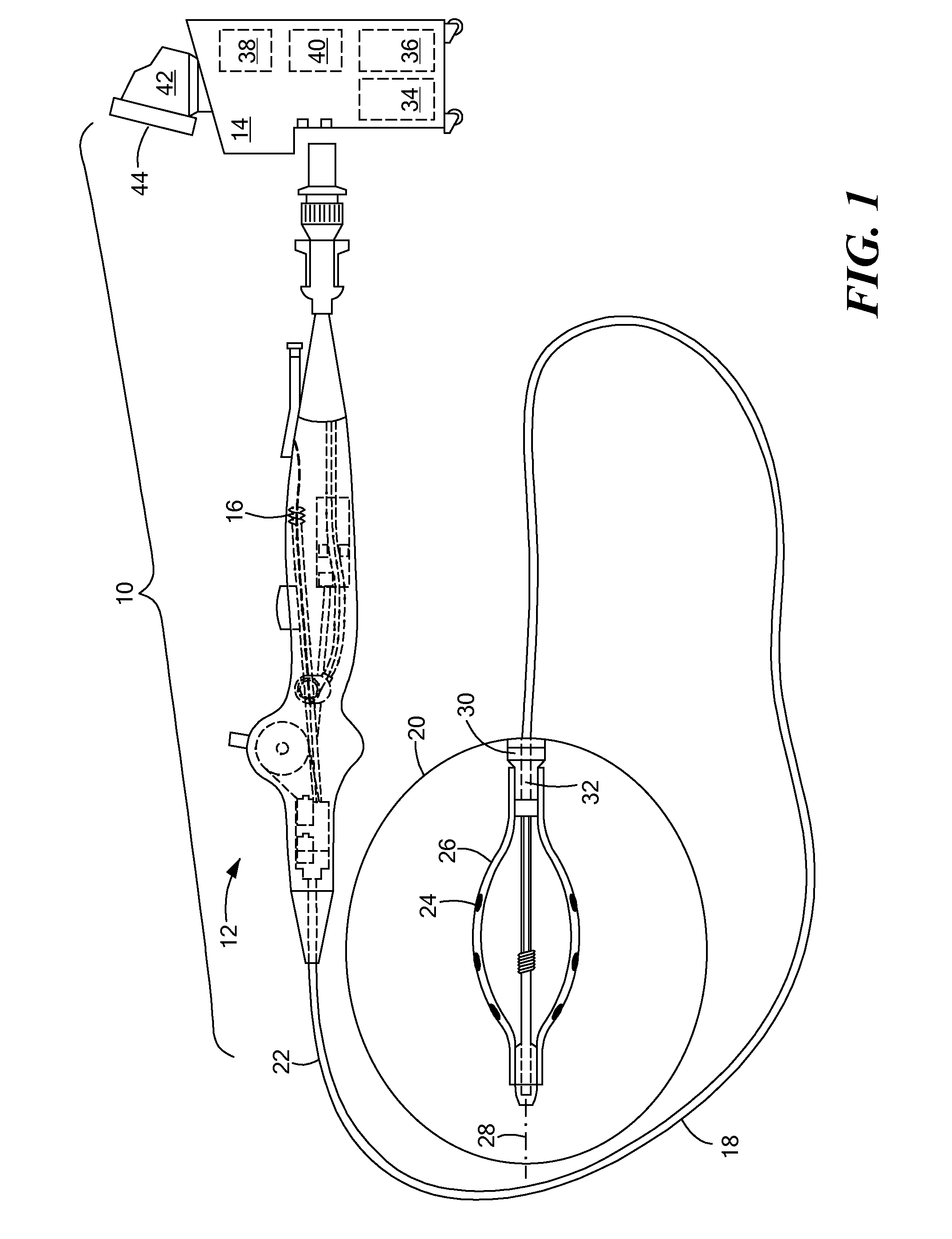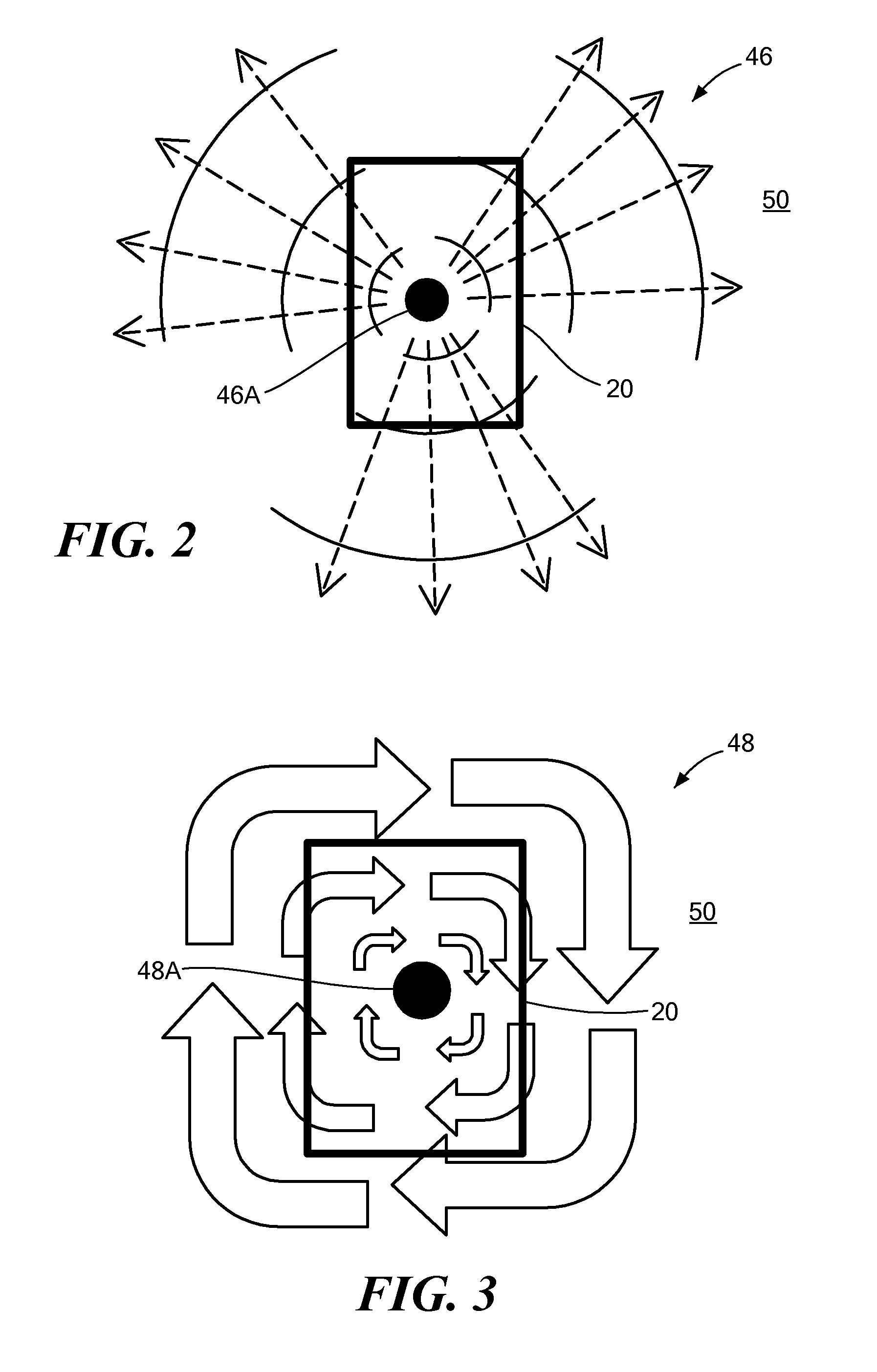Catheters and methods for intracardiac electrical mapping
a technology of electrical mapping and catheters, applied in the field of catheters and methods for intracardiac electrical mapping, can solve problems such as the termination of electrical conduction
- Summary
- Abstract
- Description
- Claims
- Application Information
AI Technical Summary
Benefits of technology
Problems solved by technology
Method used
Image
Examples
first embodiment
[0035]Now referring to FIG. 7, a distal portion 20 of a medical device 12 with mapping and ablation functionality is shown. The distal portion 20 may have a coil or concentric spiral configuration 54 with a plurality of turns. The coil or concentric spiral 54 may lie in a plane that is substantially orthogonal to the longitudinal axis 28 of the device 12. Each turn includes an anterior face 56, on which is positioned one or more mapping elements 24 and / or one or more treatment elements 26. If the spiral 54 is the treatment element 26, then the face 56 of the spiral 54 may only contain mapping elements 24. To enhance surface area and tissue contact, the one or more mapping 24 and / or treatment elements 26 may have a curved or semi-circular profile that extends from the anterior face 56 of each turn of the spiral 54 (for example, as shown in FIG. 11). As a non-limiting example, as shown in FIG. 7, the spiral 54 is the treatment element 26 on which a plurality of mapping elements 24 are...
second embodiment
[0036]Now referring to FIG. 8, a distal portion 20 of a medical device 12 with mapping 24 and ablation functionality is shown. The distal portion 20 may include a crossed-arm array 60 that includes a plurality of arms 62, each of which bearing one or more mapping 24 and / or treatment elements 26 at an anterior face 64 of the array 60. Each arm 62 may include a first portion 66 at the anterior face 64 of the array 60 on which the one or more mapping 24 and / or treatment elements 26 are borne, and a second portion 68 that is coupled to the device 12. Each electrode may serve a mapping and / or ablation function, and it is conceived that mapping elements 24 may protrude from underlying ablative structures (as shown and described in FIGS. 11 and 13). The point at which the first 66 and second 68 portion of each arm 62 meet may form an acute angle. The second portion 68 of each arm 62 may be affixed to a shaft 58 that is slidably movable within the elongate body 18 of the device 12, or affix...
third embodiment
[0037]Now referring to FIG. 9, a distal portion 20 of a medical device 12 with mapping and ablation functionality is shown. The device 12 may be a focal catheter or similar device, without a distal array or configuration and the one or more mapping 24 and / or treatment elements 26 (referred to in FIG. 9 as “24 / 26”) being borne along the distal portion 20 of the elongate body 18. Alternatively, the distal portion 20 of the device 12 may be composed of a material different than that of the elongate body 18, may have a different diameter or rigidity, or the like. To enhance surface area and tissue contact, the one or more mapping 24 and / or treatment elements 26 may have a curved or semi-circular profile that extends from the distal portion 20 (for example, as shown in FIG. 10). Alternatively, the one or more mapping 24 and / or treatment elements 26 may be set within and flush with the distal portion 20 (for example, as shown in FIG. 11). Additionally, the distal portion 20 may be compose...
PUM
 Login to View More
Login to View More Abstract
Description
Claims
Application Information
 Login to View More
Login to View More - R&D Engineer
- R&D Manager
- IP Professional
- Industry Leading Data Capabilities
- Powerful AI technology
- Patent DNA Extraction
Browse by: Latest US Patents, China's latest patents, Technical Efficacy Thesaurus, Application Domain, Technology Topic, Popular Technical Reports.
© 2024 PatSnap. All rights reserved.Legal|Privacy policy|Modern Slavery Act Transparency Statement|Sitemap|About US| Contact US: help@patsnap.com










